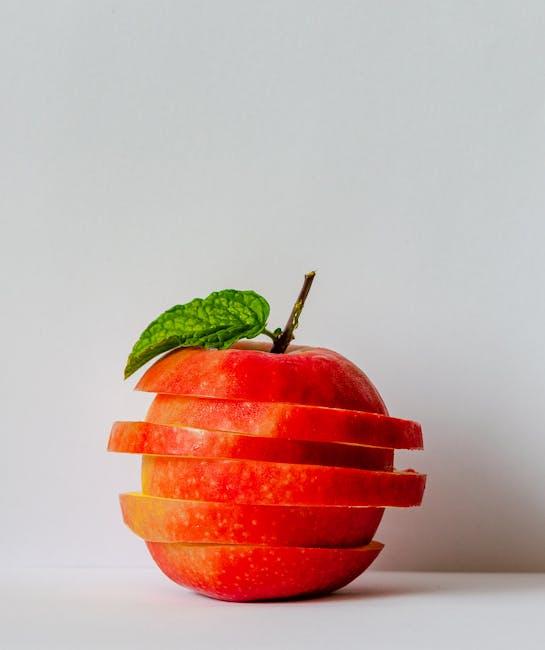In an era were convenience and efficiency dictate our tech experiences, the humble charging cable has emerged as an unsung hero—or a potential villain. With Apple’s transition to USB-C across it’s range of devices,the market has seen an influx of charging options,all promising to deliver power and performance. But not all cables are created equal. In this article, we’ll delve into the world of Apple USB-C charge cables, comparing the genuine article with a myriad of third-party alternatives. We’ll explore durability, charging speed, compatibility, and overall value to help you navigate the tangled web of choices—ensuring you stay powered up without compromising quality. join us as we untangle the facts and fiction in the quest for the perfect USB-C cable.
Understanding the Anatomy of Apple USB-C charge Cables
To appreciate the nuances between genuine apple USB-C charge cables and their third-party counterparts, one must delve into their anatomical structure.Genuine Apple cables are characterized by their superior build quality, featuring a robust polycarbonate exterior that withstands wear and tear much better than cheaper alternatives. Each cable is designed with precision, adhering to strict industry standards that ensure optimal conductivity and efficient power delivery. Elements such as high-quality copper wiring and reinforced stress points contribute significantly to their longevity, preventing common issues like fraying or internal wire damage. The seamless integration of chipsets is also pertinent, with genuine cables containing Apple-certified components that facilitate faster charging and data transfer rates.
In contrast, many third-party cables may appeal to the wallet with their lower price points, but frequently enough fall short in terms of performance and safety. While some reputable brands strive to meet quality standards, others may compromise on essential features, leading to potential overheating or compatibility issues.Key indicators that can help in distinguishing between genuine and third-party options include:
- Build Quality: Check for sturdiness and feel of the cable.
- Certification: Look for MFi (Made for iPhone/iPad) certification.
- Price Point: Be cautious of deals that seem too good to be true.

Evaluating Performance: Genuine vs. Third-Party Options
When it comes to evaluating the performance of Apple USB-C charge cables, ther are meaningful differences between genuine and third-party options. Genuine Apple cables are meticulously engineered to deliver optimized charging speeds and data transfer rates that are compatible with Apple’s ecosystem. Users often report a seamless charging experience,courtesy of Apple’s stringent quality control and adherence to specifications. In contrast, third-party cables can vary widely in performance, with some successfully mimicking the performance of genuine ones while others fall short, leading to slower charging times or compatibility issues. Thus, it’s crucial for consumers to be informed about potential discrepancies in performance.
To gauge the effectiveness of these cables, we can consider several performance metrics, such as durability, charging speed, and compatibility. A simple comparison table illustrates these facets:
| Cable Type | Charging speed (W) | Expected Lifespan (Cycles) | Price Range |
|---|---|---|---|
| Genuine Apple Cable | 20-100 | 1000+ | $19-$49 |
| High-Quality Third-Party | 18-60 | 500+ | $10-$30 |
| Low-Quality Third-Party | 5-15 | 200 | $5-$15 |
As seen in the table, while genuine cables often offer superior charging speeds and a longer lifespan, some high-quality third-party options can serve as competent alternatives. Though, potential buyers should exercise caution—prioritizing reputable brands and checking user reviews to ensure they don’t compromise on quality and performance.

Identifying Quality Marks and Certifications for Reliability
When choosing between genuine and third-party USB-C charge cables, it’s crucial to look for specific quality marks and certifications that ensure reliability. MFi Certification, or “Made for iPhone,” is a prevalent hallmark issued by Apple to third-party accessory manufacturers, indicating that the product meets Apple’s stringent standards for performance and safety. Additionally, USB-IF Certification (USB Implementers Forum) signals compliance with industry standards, ensuring that the cable can effectively handle power and data transmission without compromising device integrity.
Other quality indicators also play a significant role in identifying a superior cable. Consider the following factors:
- Brand Reputation: Established brands usually adhere to strict quality control.
- Customer Reviews: feedback can provide insight into real-world performance.
- Warranty and Support: A solid warranty indicates a manufacturer’s confidence in their product.
By keeping an eye out for these certifications and quality marks, you can make informed decisions that ensure optimal charging performance and device safety while avoiding subpar alternatives.

Making Informed Choices: Recommendations for Every User
When it comes to selecting the right charging solution for your Apple devices, it’s crucial to weigh your options carefully. Investing in a genuine Apple USB-C charge cable ensures compatibility and reliability. These cables are meticulously engineered to deliver optimal charging speeds and safeguard your devices from potential damage due to inferior construction. Here’s what you might consider when opting for a genuine cable:
- Durability: Genuine cables tend to be more resistant to wear and tear.
- Warranty Protection: Authentic Apple products come with warranty support.
- Enhanced Performance: They are designed to work seamlessly with Apple devices.
On the other hand, third-party cables can seem appealing due to their lower price point, but caution is warranted. While some brands offer high-quality alternatives, others may fall short in safety and performance. if you do consider a third-party option, examine key factors carefully to ensure your choice aligns with your needs:
- Certification: Look for MFi (Made for iPhone/iPad) certification.
- User Reviews: Check customer feedback for insights on longevity and reliability.
- Return Policy: Ensure the seller provides a reasonable return policy in case the cable does not perform as was to be expected.
Final Thoughts
the debate between genuine Apple USB-C charge cables and their third-party counterparts mirrors the ongoing pursuit of balance between quality and cost in our tech-driven lives. While genuine Apple cables promise reliability and integration within the Apple ecosystem,the allure of budget-pleasant alternatives cannot be overlooked,especially for those who value versatility and accessibility. Ultimately,the choice hinges on your individual usage patterns and priorities—seeking out durability,charge speed,or simply an economical solution.As you navigate this landscape, remember the importance of doing your homework: read reviews, check compatibility, and weigh your options. Whether you choose to stick with the original or explore the myriad third-party offerings, may your charging experience be seamless and efficient, powering you through your daily adventures. Happy charging!





